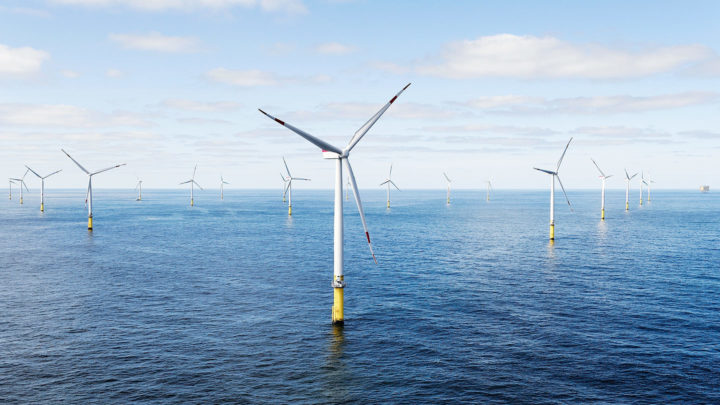Offshore wind – bigger is better
The UK's latest wind farms are exceeding expectations, and there is more to come
By Jonny Marshall
Share
Last updated:
A world-leader in offshore wind. Cutting carbon while cutting bills. Blowing the winds of change through our energy sector.
Ministers are never short of praise for offshore wind power. Now the only substantive recipient of new support for renewable energy, Britain’s offshore wind fleet is the largest in the world.

As such, it is something of a showroom for the latest kit, with many projects making the most of cutting-edge technology to achieve performance that would have been unthinkable a decade or so ago.
Opened just two months ago, the jewel in the crown is Walney Extension, set across 149 km2 of the Irish Sea, generating enough power to run nearly 600,000 homes. Since coming online, the world’s largest offshore wind farm has pumped a vast amount of carbon-free electricity into the grid.
During November it claimed the prize for the most productive wind farm in the UK, running with a load factor of more than 70% - in other words, generating around 70% of its maximum output over the month.
For October – the only other complete month since commissioning – Walney Extension ran with a load factor just shy of 60%, National Grid data summarised by Aurora Energy Research shows.
These values represent windy winter months, one of which saw a new national output record on the back of Storm Diana, so are not exactly representative of year-round performance.
However, extrapolating to give a theoretical average over the past 12 months shows that Walney Extension would be expected to realise an annual load factor of 55%, a quarter higher than the fleet-wide average (44%).
Compared with Government expectations, these figures stand out. BEIS anticipates that offshore wind farms built on the back of the second and third CfD rounds will have a load factor of 47.7%.
Bigger and bigger
These projects - some of which will not be fired up until 2025 – will have access to far larger and more advanced turbines than those in use currently.
Siemens, one of the global leaders in wind technology, provided dozens of 8 MW turbines for Walney Extension, already a huge increase in size compared with those installed just a couple of years ago.

And earlier this year GE announced plans to develop a 12 MW offshore turbine. These monster units – each set to tower 260 metres above the sea surface – are expected to deliver a load factor of 63%, again well above BEIS expectations.
Larger turbines mean lower costs as well as more energy. Output is directly proportional to the area covered by the blades in a single rotation (the swept area), fuelling manufacturers to make bigger and bigger units.
There are even greater gains to be had from placing wind farms in high wind areas, as the output of a turbine increases proportionally to the cube of wind speed.
Handy, then, that British waters are some of the windiest regions in Europe.
More for Less
Bigger turbines also mean that developers need to build fewer of them to reach a certain capacity. This equates to fewer foundations dug, fewer towers fastened to the sea bed and fewer boats to transport components. All of which contribute to lower construction costs and, ultimately, lower energy bills.
Therefore, as turbines continue to grow ever larger, we can expect costs to carry on tumbling. There was initial consternation when the budget for the 2019 CfD auction was announced, with only around 10% of the £557m renewables 'budget' set aside for this round. However, considering the pace of change in the industry, it is not unrealistic to expect this pot to deliver a decent amount of capacity.
So much so that BEIS has imposed an upper limit on the auction. Should costs plummet more than the government expects, no more than 6 GW of offshore wind will receive support – presumably in order to spread out the delivery of new capacity over the next decade.
Hypothetical, if this 6 GW limit is reached and the latest 12 GW turbines are used, this auction alone could see more than 33 TWh of clean power – around 10% of total demand – pushed into the UK grid every year.
While this figure may seem ambitious at first glance, the past couple of years have shown that the offshore wind sector can surprise us.
Record low auction results, cut-throat development and healthy competition within the industry are all contributing towards growth that could well see this limit reached.
The offshore wind industry has exceeded expectations on a regular basis in recent years, and it would take a brave person to bet against it doing so again.
Share